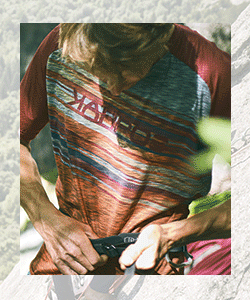Improving : 6 tips that actually work

In sport climbing, usually we have to work hard and be patient to make progress. However, there are a few keys that can literally transform an intermediate climber’s performance in a matter of hours. To be successful on the crag it boils down to the beautiful basics. Improving : 6 tips that actually work !
Improving : 6 tips that actually work.
Start your day with a slab
Yes, start on a slab ! And focus on accurately placing your feet. Good footwork is intrinsically linked with energy saving. And confidence. If you place your foot well, everything spirals upwards. But if you place it badly, it all spirals downwards. Gyms don’t prepare us adequately for the footwork demands of rock and it takes a few routes to establish how much pressure we can put out through our feet.
Pause over the foothold for a split second and place your foot without toe-dragging or readjustment and then weight it as fully as you dare. Push a little harder each time to tease the limits and if it blows and you fall then you’ve killed two birds with one stone (as you probably needed to do that too!) If you suspect you have an issue with over-gripping or getting pumped too quickly, then it probably has less to do with a lack of endurance or the way you grip the holds. It’s usually caused by not trusting your feet.

Get pumped on your warm-up
It’s in our instinct to save every drop of energy for our target onsight. And that always tempts us to leap straight on it after a very easy warm-up route. Yet the penalty is that hideous “flash-pump” that comes on like an express-train and is impossible to flush out. Yet if we do a mid-grade route that causes us to get 60 to 80 percent pumped, then this primes the systems to remove lactic acid, meaning we can control the pump much better when we go for a hard onsight.
Or if you’re going for a redpoint project then do links on it (say three or four clips at a time) as opposed to just going bolt-bolt or worse still, going straight for it after a very easy warm-up. If you haven’t been getting pumped in your warmup then this new tactic it will put a grade or two on your climbing immediately.

Take practice falls
Fear of falling is by far the most common weakness, which prevents intermediate sport climbers from climbing at their limit and improving. If you often find yourself eyeing the distance between bolts or hesitating to commit to run-outs, especially when pumped, then this applies to you. The more you put this off, the worse it will get. It’s easily fixed by taking regular practice falls using a modern dynamic belaying system. Leave your ego behind.
You practice at your own risk and seek guidance if unsure. There is no approved best method. Variations exist and you need to adjust your method to account for weight-differences between climbers, different belay devices and different terrain.

Improving : Just try it
Don’t keep saving routes and making excuses to yourself to delay things. To quote British coach, Lucy Creamer, “The only way you won’t climb harder routes is if you don’t try them.” Of course, this is within reason and there’s no point trying your limit grade at the end of a long crag session when you are totally trashed.
But in general, we procrastinate in search of that illusory moment when we’ll feel invincible, conditions will be perfect and it will be a done-deal. It doesn’t matter if you fall off. It’s just a route. And there are plenty more. You have to fail at a certain number of hard routes before you can succeed. Good climbers are good because they try hard routes. And if you delay trying hard routes then you delay improvement.

Believe in yourself
The main reason most people climb harder on-the-spot in our coaching sessions is because we believe in them more than they believe in themselves. When you’re failing to achieve the next grade it always feels miles away and you don’t see that, in fact, you’re painfully close. Self-belief is the most powerful weapon in climbing, whereas lack of confidence is the greatest inhibitor.
Improving : Work the route properly
One of the most common reasons intermediates fall off projects is because they forget their sequence. When bolt-to-bolting (working) a route, don’t just do the move once and then move on. Lower back down and repeat it twice. Ie: do it three times in a row. If this takes too long then work the bottom half first, belay your partner. And then work the top half separately. And don’t go for a redpoint until you’ve done some links. Where you do the route in, say, two or three sections with breaks at each stopping point.
The purpose here is to get into your flow. And get used to doing the moves when you are fatigued and above all, to check that you’ve got it imprinted to your memory. If the route is properly hard, it’s not enough merely to remember the holds, you’ll need to remember the order in which you move each hand and foot. And this only comes from drilling it repeatedly. You can also do this at the end of sessions when feeling too tired for another go. A common error is only to focus on the top section and the cruxes. But you need to practice the rests and easy sections too.











